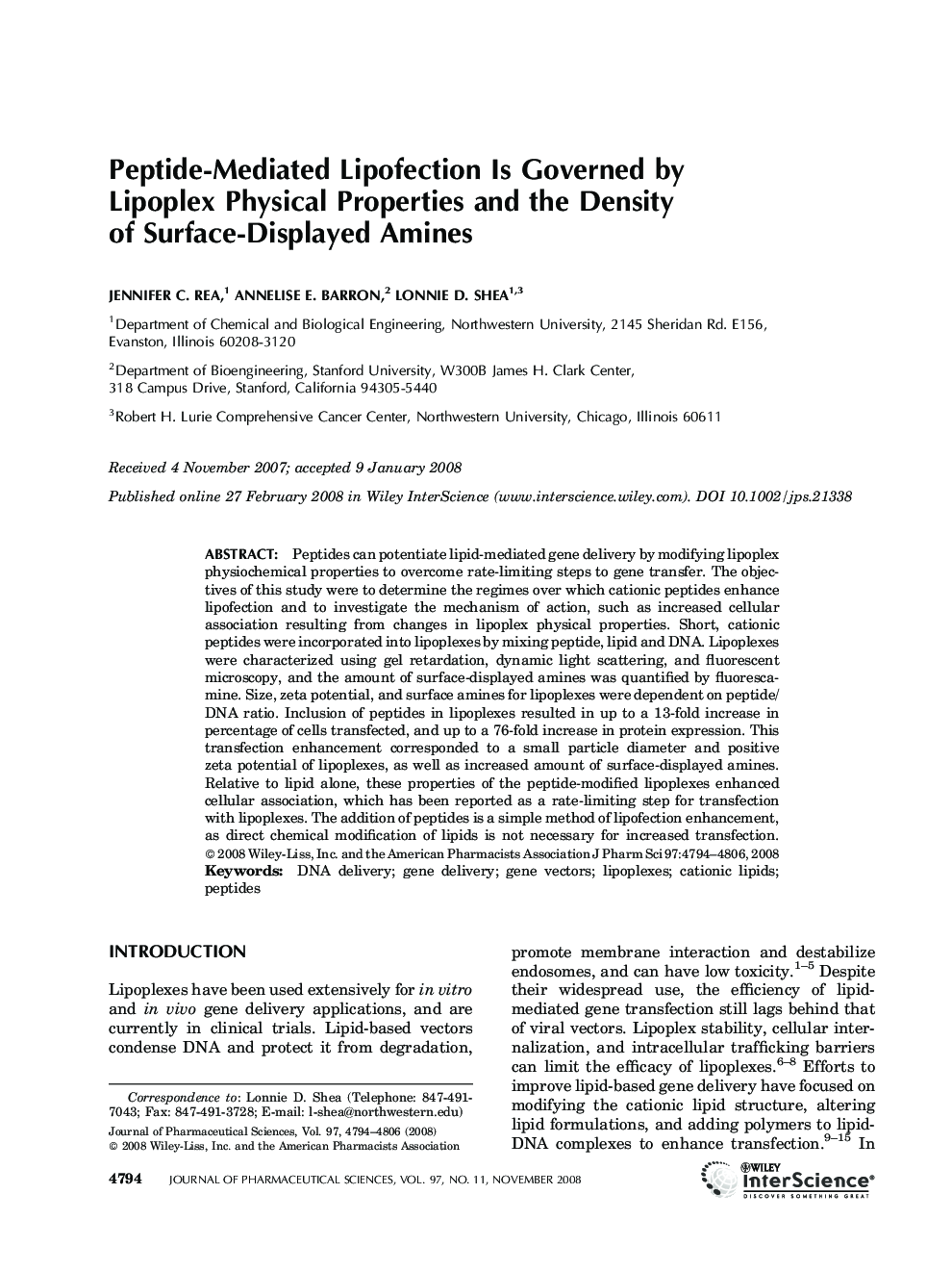| Article ID | Journal | Published Year | Pages | File Type |
|---|---|---|---|---|
| 2487473 | Journal of Pharmaceutical Sciences | 2008 | 13 Pages |
Abstract
Peptides can potentiate lipidâmediated gene delivery by modifying lipoplex physiochemical properties to overcome rateâlimiting steps to gene transfer. The objectives of this study were to determine the regimes over which cationic peptides enhance lipofection and to investigate the mechanism of action, such as increased cellular association resulting from changes in lipoplex physical properties. Short, cationic peptides were incorporated into lipoplexes by mixing peptide, lipid and DNA. Lipoplexes were characterized using gel retardation, dynamic light scattering, and fluorescent microscopy, and the amount of surfaceâdisplayed amines was quantified by fluorescamine. Size, zeta potential, and surface amines for lipoplexes were dependent on peptide/DNA ratio. Inclusion of peptides in lipoplexes resulted in up to a 13âfold increase in percentage of cells transfected, and up to a 76âfold increase in protein expression. This transfection enhancement corresponded to a small particle diameter and positive zeta potential of lipoplexes, as well as increased amount of surfaceâdisplayed amines. Relative to lipid alone, these properties of the peptideâmodified lipoplexes enhanced cellular association, which has been reported as a rateâlimiting step for transfection with lipoplexes. The addition of peptides is a simple method of lipofection enhancement, as direct chemical modification of lipids is not necessary for increased transfection. © 2008 WileyâLiss, Inc. and the American Pharmacists Association J Pharm Sci 97:4794-4806, 2008
Related Topics
Health Sciences
Pharmacology, Toxicology and Pharmaceutical Science
Drug Discovery
Authors
Jennifer C. Rea, Annelise E. Barron, Lonnie D. Shea,
